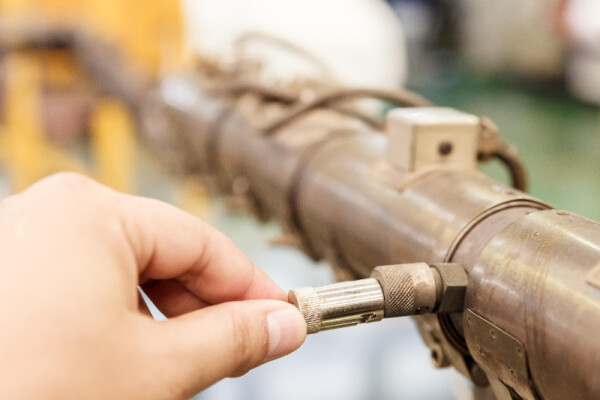Toll Free: (800) 888-8987 | Phone: (440) 835-3540 | office@ramsensors.com
How to Wire a Thermocouple Sensor
How Do Thermocouples Work?
Thermocouples are temperature sensors used in a wide variety of applications. The way they work is relatively simple. Thermocouples are made up of two different alloys that create voltage when they touch each other. The voltage is increased based on the difference in temperature between the two metals, due to a natural phenomenon called the Seebeck effect or the thermoelectric effect. One of the alloys is kept at a consistent reference temperature and the other is placed on the object whose temperature you want to measure. You can then measure the voltage created when the alloys are touched together and use that information to figure out the temperature. Because thermocouples are so small, cheap, and accurate, they are often used to measure temperature in devices like thermometers, as well as safety features in ovens and water heaters.
How to Wire a Thermocouple Sensor
Wiring a Thermocouple Sensor to One Instrument
In general, wiring a thermocouple sensor to an instrument is pretty easy. Thermocouples usually have two wires: a red negative output wire, and a black positive output wire. Hooking these wires up to an instrument is comparable to hooking up a car battery for a jump start. Just connect the negative output wire of the sensor to the negative terminal of the instrument, and the positive output wire to the positive terminal.
Wiring a Thermocouple Sensor to Two or More Instruments
However, if you're trying to connect a single thermocouple sensor to two different instruments, the process becomes a bit more complicated. If you just repeat the process twice and hook up two instruments to the same thermocouple, you could end up with inaccurate temperature readings due to the resistance, or impedance, of the wires. There are two main methods for hooking up a single sensor to two different receivers.
1. Use a Dual Thermocouple Sensor.
The simplest way is to get a dual thermocouple sensor, and it's a good idea to try this method first. These sensors have two different junctions that are both connected to the object whose temperature you want to measure, and each of those junctions can be hooked up to a separate receiver. However, this method is limited because you can only hook up a dual thermocouple sensor to two instruments at once. If you need to hook up the sensor to three or more instruments, you'll have to try a different method.
2. Use a Thermocouple Transmitter.
The other way to hook up a thermocouple to two different instruments is to use a thermocouple transmitter. Instead of connecting the sensor to multiple instruments that can measure the output, a transmitter just takes the output from a single sensor and converts it into voltage or a current signal. This information can be broadcast from the transmitter to any number of instruments, making it a more versatile method. However, it's also a little trickier, and requires some programming effort. You have to make sure that every instrument to which you send the signal is properly scaled; otherwise the measurements could be inaccurate.
Purchase Thermocouple Temperature Sensors From RAM Sensors, Inc.
When shopping for thermocouple temperature sensors, you need to choose a reputable supplier with reliable products. For over 30 years, RAM Sensors, Inc. has been producing custom-made thermocouples for various industrial applications, including:
- Remote Thermocouples
- Industrial Thermocouple Assemblies
- Mineral Insulated Magnesium Oxide (MgO) Thermocouples
Contact an experienced sales representative today!





